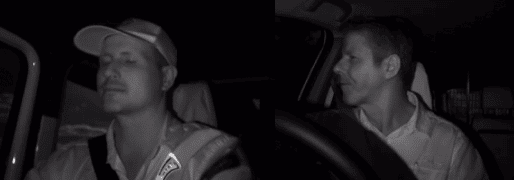Rural Road Safety: Taking the wheel
September is Rural Road Safety Month.
Per 100 million km, the Australian fatality rate is 0.45 and hospitalised injury rate is 15.3[1],[2].
Driving in remote regions is 11 times higher risk than the city[3]. The risk of a vehicle related fatality or injury is real, and it is high.
An award-winning natural gas industry road safety program named ‘How to drive safely around the world 500 times’ goes beyond improving internal driver safety. The program has made a genuine impact on regional road safety.
Determining their teams drive more than 20 million kilometres a year – equivalent to travelling around the globe 500 times – on vastly mixed conditions and often in very remote areas, Santos decided their approach to driver safety needed to be rethought.
The first step was reducing speed limits from 80 to 60km/h on their private, unsealed road network. That was the easy part.
Critically, the program sought to mitigate driver fatigue and distraction and improve advance awareness of road systems.
Tech Cultivates Safer Culture
A renewed focus on ‘harsh driving data’ identified and mapped degraded roads and poor signage. Those conditions were either signposted or flagged with local maintenance crews for repair.
Next, in-vehicle fatigue and driver distraction technologies were introduced to provide immediate feedback to drivers. This included a camera systemalerting the driver via an audio warning and a vibration through their seat should indicators of fatigue be detected.
These sensorial alerts help drivers regain concentration, pull over and assess their fatigue level with their supervisor. The initial trial was very successful and the program to install the technology across the fleet is well advanced.

Images above: The fatigue and distraction monitoring cameras detect and alert the driver in real time if an eye closure or distraction event occurs.
The Results
Driving performance has improved with a 50% reduction in driving-related high potential events and a 25% improvement in IVMS exception rates since the program commenced.
Santos has been able to provide regional councils with data demonstrating either ineffective road signage or road degradation.
This information has prompted the Council to arrange targeted maintenance. Activity which would have otherwise not been triggered until an annual inspection, as well as improved signage in areas known to record a high number of exceptions, are now benefiting all road users.
Whether it’s road safety, technology, science or education, the natural gas industry is at the forefront.

Images above: The photos above show where a cluster of harsh driving events emerged following a rain event indicating potential road degradation (cluster highlighted in yellow in the left image). The data was provided to the local Council for targeted road maintenance. The right image shows driving performance after the road repair. As this road is a public road, the road repair benefited all road users.
[1] Source – Australian Bureau of Infrastructure and Transport Research Economics (bitre.gov.au).
[2] Santos comparison for 2019-21: Fatality rate – 0; hospitalisation rate – 1.2 per 100M km
[3] Source – Fact sheet: Remote road safety (Office of Road Safety).
Explore
with Natural Gas Subscribe


